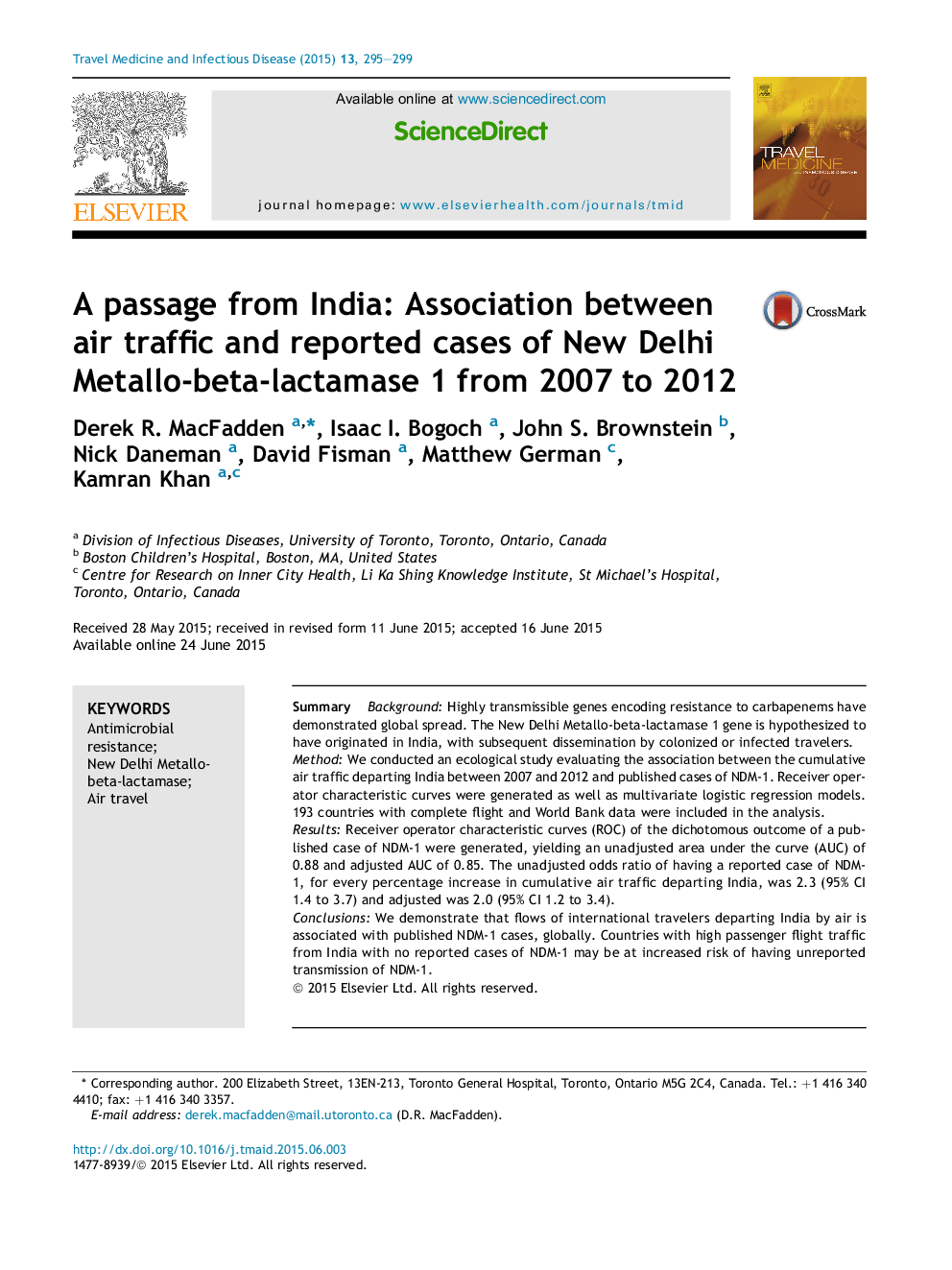| Article ID | Journal | Published Year | Pages | File Type |
|---|---|---|---|---|
| 3392940 | Travel Medicine and Infectious Disease | 2015 | 5 Pages |
SummaryBackgroundHighly transmissible genes encoding resistance to carbapenems have demonstrated global spread. The New Delhi Metallo-beta-lactamase 1 gene is hypothesized to have originated in India, with subsequent dissemination by colonized or infected travelers.MethodWe conducted an ecological study evaluating the association between the cumulative air traffic departing India between 2007 and 2012 and published cases of NDM-1. Receiver operator characteristic curves were generated as well as multivariate logistic regression models. 193 countries with complete flight and World Bank data were included in the analysis.ResultsReceiver operator characteristic curves (ROC) of the dichotomous outcome of a published case of NDM-1 were generated, yielding an unadjusted area under the curve (AUC) of 0.88 and adjusted AUC of 0.85. The unadjusted odds ratio of having a reported case of NDM-1, for every percentage increase in cumulative air traffic departing India, was 2.3 (95% CI 1.4 to 3.7) and adjusted was 2.0 (95% CI 1.2 to 3.4).ConclusionsWe demonstrate that flows of international travelers departing India by air is associated with published NDM-1 cases, globally. Countries with high passenger flight traffic from India with no reported cases of NDM-1 may be at increased risk of having unreported transmission of NDM-1.
